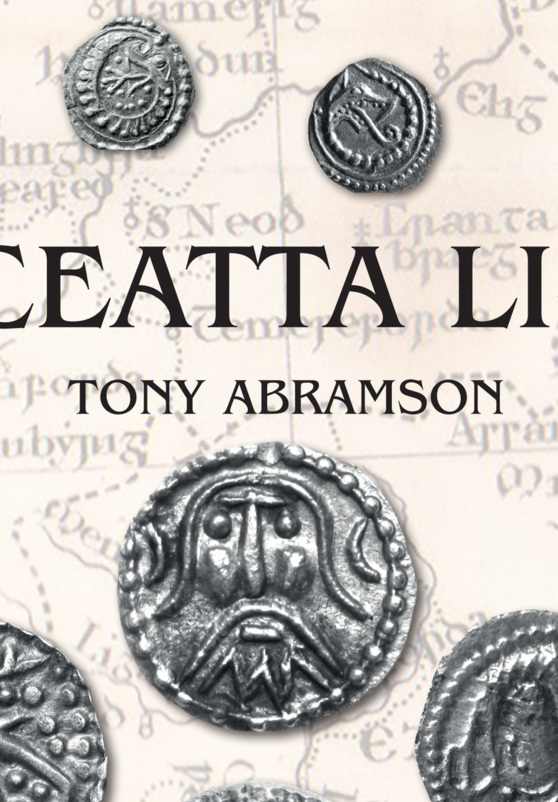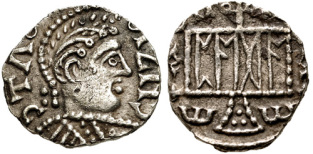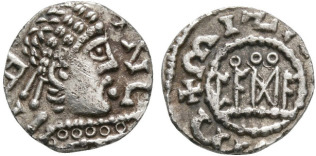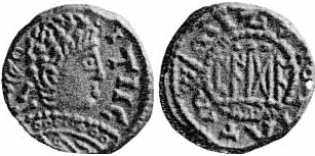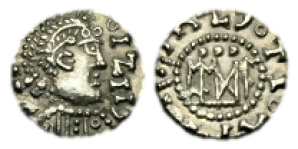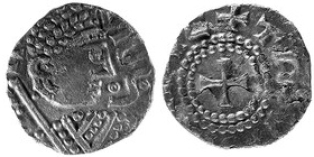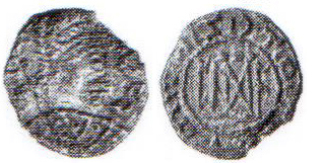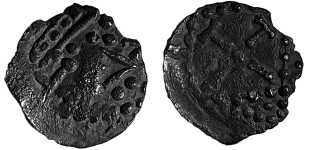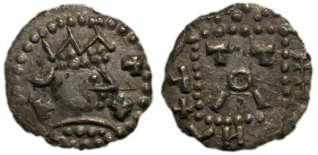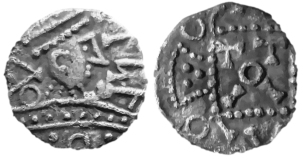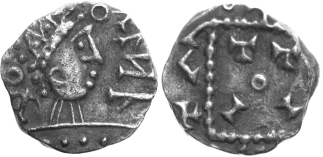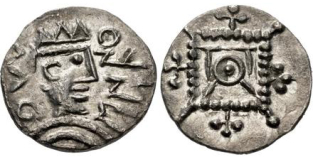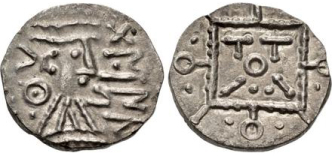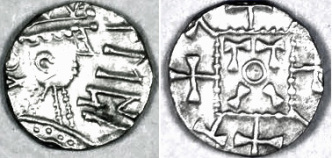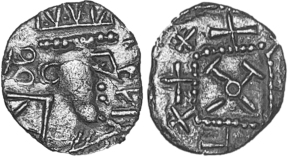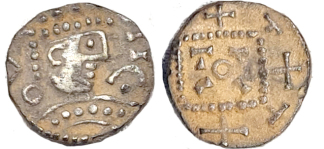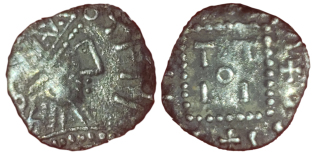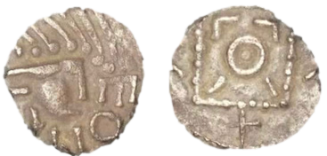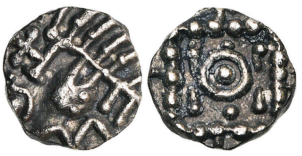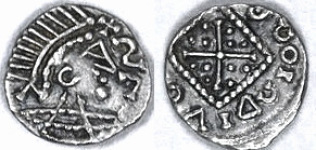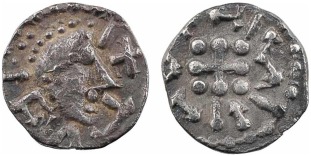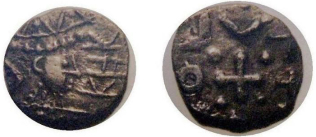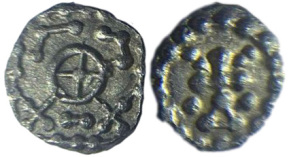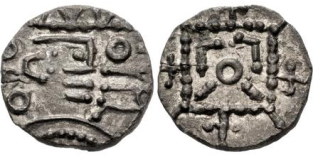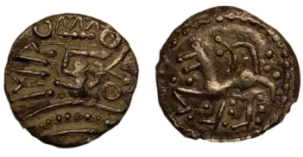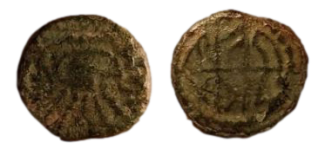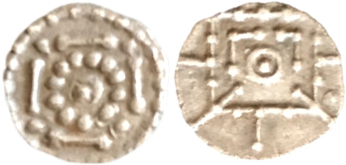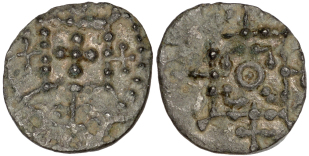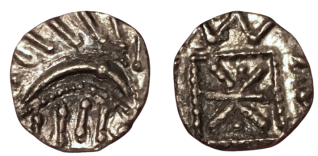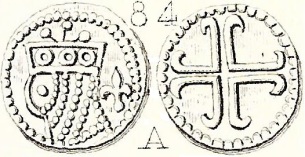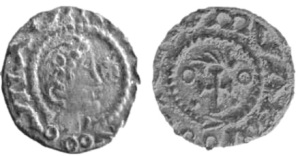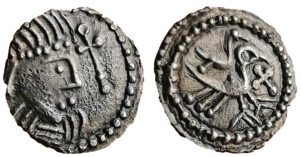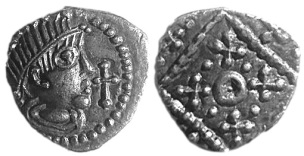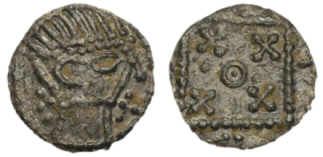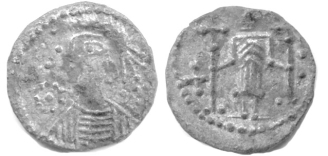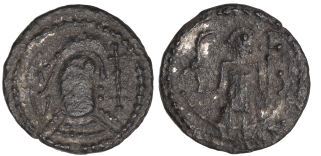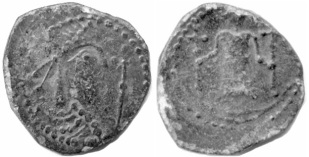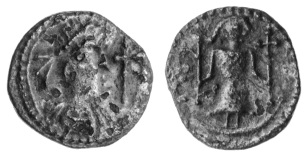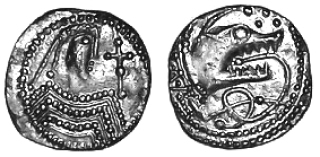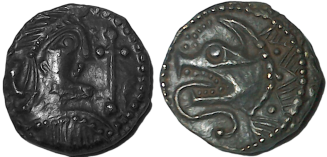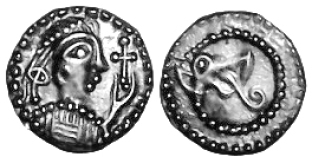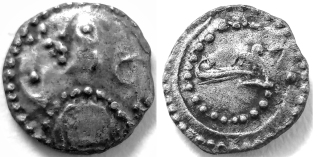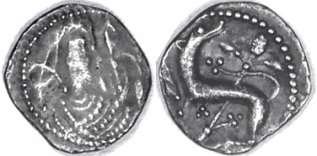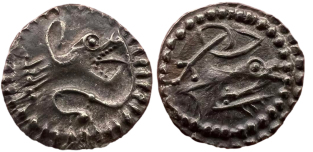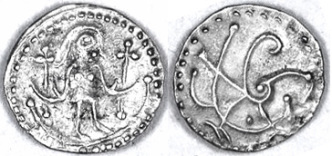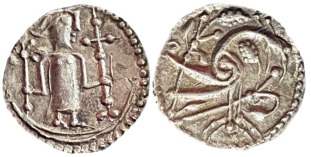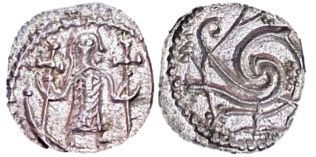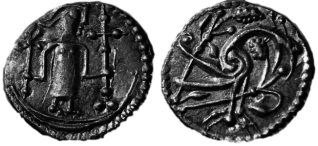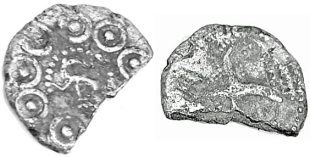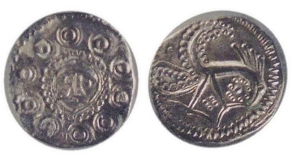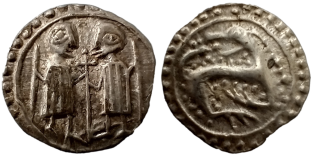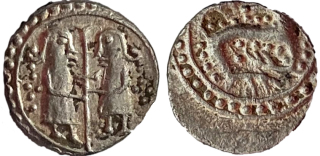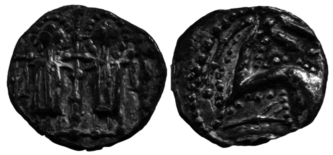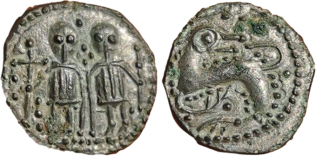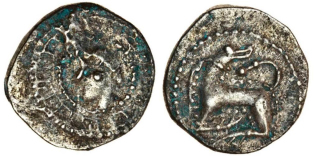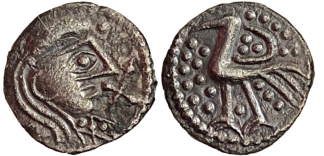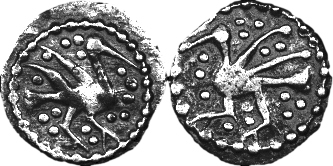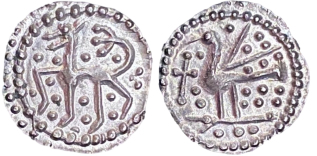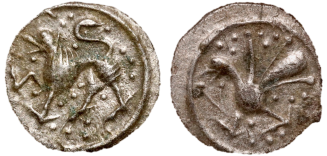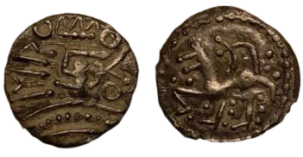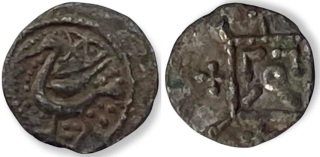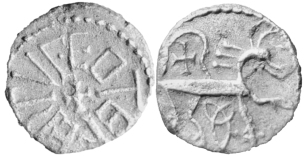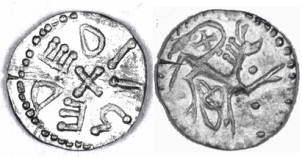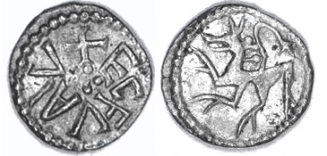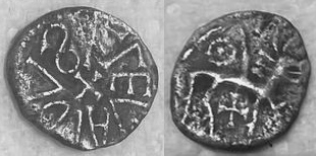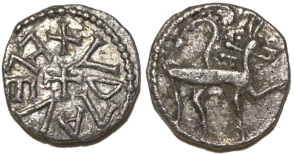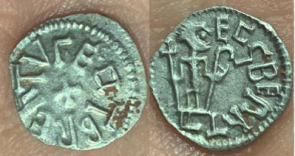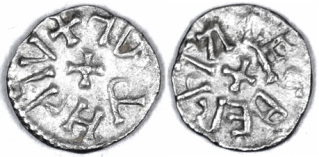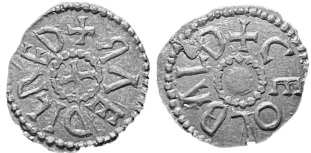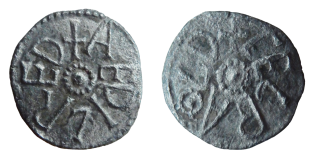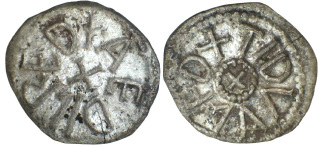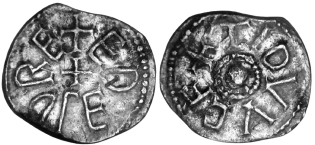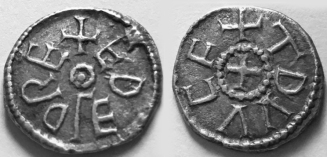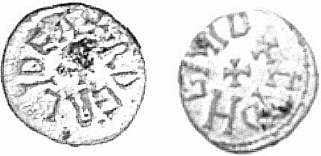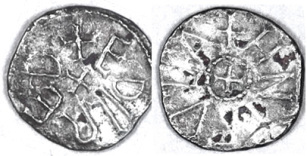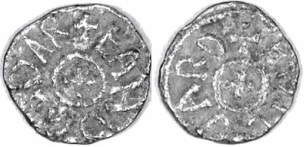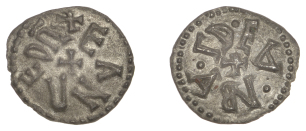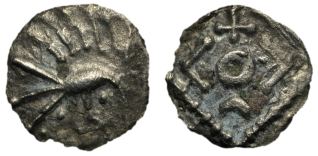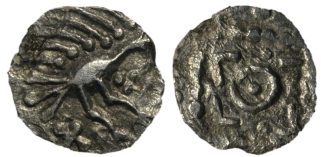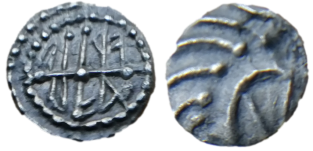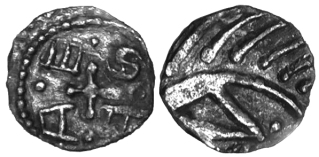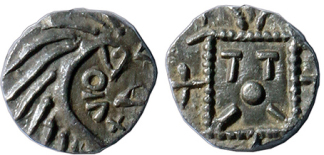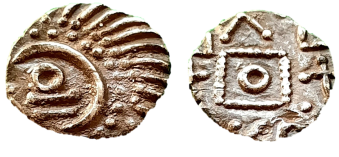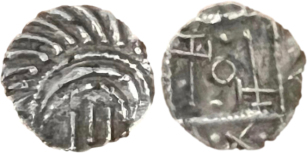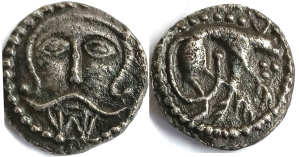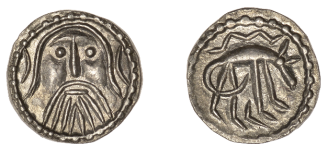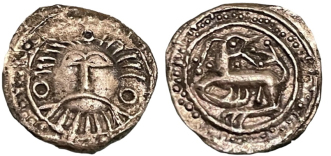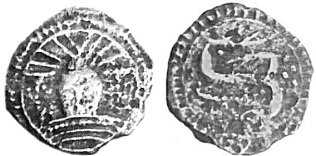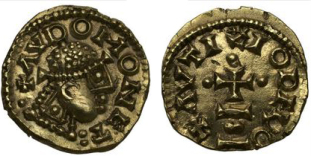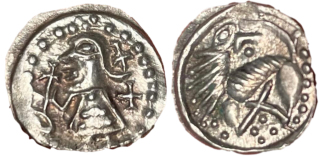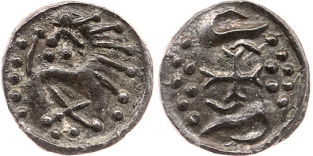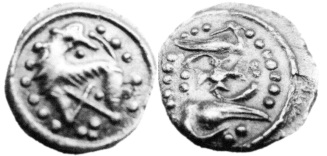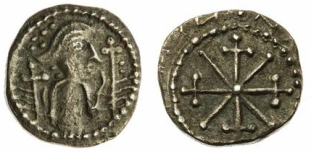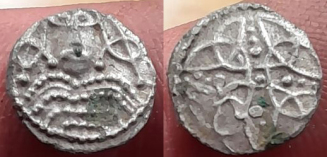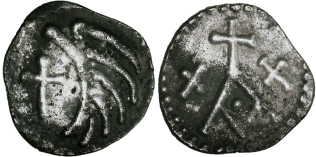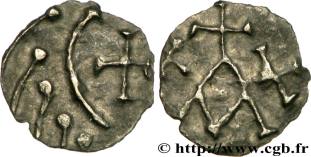SCEATTA LIST - ADDITIONS
to February 2023
A comprehensive, illustrated, catalogue
of early Anglo-Saxon silver coinage
Additional Varieties
If you are unable to find your coin in Sceatta List or below, please contact Tony.
Listed below are additional varieties since edition 3 was published (up to February 2023), plus some improved images, including:
|
New Varieties (54) , New Variants (8), Improved/Additional Images (30) 1-16, 1-25, 1-33, 1-35, 2-20, 2-50, 3-80, 4-12, 4-15, 4-25, 4-26, 4-30, 4-50, 4-100, 4-110, 6-24, 6-50, 7-35, 8-15, 8-100, 10-20, 11-120, 12-55, 12-85, 12-100, 12-110 13-133, 16-25, 19-25, 20-10, 21-30, 21-75, 32-25, 33-77, 34-20, 34-25, 37-35, 38-10, 38-25, 39-10, 39-35, 41-10v, 44-10, 45-10v, 45-50 (2), 45-55, 48-1015, 52-15, 52-20, 52-40, 52-40, 59-15, 63-70, 64-60, 64-110, 66-40, 67-55? 67-60, 70-130, 72-40, 73-18, 73-65, 73-80, 74-14, 75-15, 80-05, 80-55, 80-140, 82-35, 82-60, 82-70, 83-40, 84-10, 86.5-45, 86.5-77, 86.5-130, 87-50, 87-60, 88-115, 92-15, 93-40, 94-30. 97-20, 98-20, 102-11, 102-15, 104-25, 104-60, 106-10, 107-10, 107-45, 107-50.
13-157 is withdrawn. See below. A Merovingian denier is shown at the end.
My gratitude to Professor Ron Bude for removing coloured backgrounds from many of these images. |
New Variety 1-35, courtesy of Mike Vosper - January 2021:
"Base Gold Thrymsa - Sceat transitional, Type Ib-IIa? / IIa., Mint in Kent, ca.670-690 AD.
12mm - 1.17g"
"Bust right, the breast is as of type Ib - lines and two annulets depicting arms etc., not a row of annulets across arms and neck as Ty.IIa is. The hair has a forward bent wreath (to resembling a
helmet) ending in some annulets - these annulets are only present on the helmeted Ib. It would appear that the die cutter has designed the hair to liken a helmet! In front of the bust is CIIZIO (for
CRISPVS blundered), this legend only occurred on Type Ib and not IIa (IIa is TIIC, TIC or AVG). / Type IIa = PADA (in Runic), with three pellets above, in a beaded circle. Tufa on left, and
mZCOTIoΛTm (C retrograde).
See S76A for the near obverse, S 769 for both sides - note the busts!
Metcalf, see Vol., 1, page 73, Pa Ib obverse and Pa IIa obverse and reverse.
It would appear that the obverse of our coin is a transition from a helmeted bust to a diademed bust, I know of no other examples and must be EXCESSIVELY-RARE"
3-60, a die duplicate of this specimen. [Note Spink managed to misorientate the reverse of my coin, despite my persistence in trying to get them to correct this and many other errors in image orientation. They were at least a dozen images they failed to show at all in the online Part III & IV auctions.]
This new find is a die duplicate of my coin and is extremely rare. The fact that this was a reliable detector find in a known location evinces the credibility of this type as being part of the corpus of sceats, derivative though it is.
Metal detector find mid-August 2022, near Kilham in the Yorkshire Wolds. 1.05g.
New sub-variety 4-12.
Obverse: regular diademed, runic bust with beaded pyramid neck. Broken A and annulet left, runes right. Annulet in exergue.
Reverse: degenerate votive standard with tufa to left [or TOTII to right], annulet either side of tufa, horns at top corners of beaded square, chevrons to sides.
Image courtesy of Andy Brooks, found Lincolnshire, August 2022.
New Variety 4-15: Horns to upper corners of votive standard but tufa replaced by cross pattée. See also here.
Image courtesy of Wayne Boyd, 1st Nov 2021.
New Variety 4-25 Series C. Obverse: radiate bust right with C-shaped ear; to left, Λ flanked by annulets; annulet and runic EPA to right. Reverse: standard with central pellet-in-annulet, Ts in upper corners, diagonal lines in lower; cross pommée on each side, beaded diagonals on outer corners. MEC 8 Series RSf; SCBI 69, 686 (same obv. die); cf. North 157; SCBC 813. 12mm, 0.99g, 90°.
Image courtesy of CNG 522, August 2022, lot 710.
Provisional new variety 4-26? Series C. Obverse: radiate bust right with C-shaped ear; Λ and pellet-in-annulet to left; runic EPA to right. Reverse: standard inscribed T T/O/II with two pellets below; at sides, annulet each side connected to standard by line, each flanked by pellets. Metcalf, Runic –; MEC 8 Series RPb; SCBI 69, 657 (same dies); North 157; SCBC 813. 13mm, 1.08g, 180°.
Image courtesy of CNG 522, August 2022, lot 705.
Variant of 4-50, probably derivative.
Obv: large featured head, right, with gap between diadem and crown, degenerate runes before and double annulet and large chevron behind.
Rev: to each side, a cross pattée eith plain crosses at corners of votive standard.
13mm. Found on the 01/02/2023 near Bishops Cannings,Wiltshire, February 2023. Image courtesy of Sean Hinksman.
Provisional new variety 4-110. Series C. Obverse: radiate bust right with annulet before diadem, C-shaped ear, pyramid neck, lips of two vertical pellets, chevron either side of annulet, left and runes (?) right. Reverse: standard with central annulet, Ts above, straight lines below (hence allocation to Series C), cross on each side, with symbols in margins (no tufa?)
Found near Cambridge, August 2022.
New Variety 6-50 VERNVS
Obv: degenerate bust left, cross pommée before.
Rev: degenerate votive standard, lines and pellets around central pellet-in-annulet.
Image courtesy of Ype de Jong 9-10 December 2022, lot Elsen 153. See here.
8-100: a contemporary, imitative variety of
8-10 seeming to replace the conventional runes with KHK. Found by 1998 on the productive 'South Wessex' site with many other authentic sceats - see specimens in the Gallery of Choice Sceats.
Image courtesy of John Heath, February 2023. Found 'south Wessex' by 1998.
Improved image 11-120. Series R8. Obverse: radiate bust right with C-shaped ear; to left, Λ flanked by annulets; annulet and runic EA to right. Reverse: standard with central annulet, symmetrical angular symbols in upper corners, diagonal lines in lower; cross pommée on each side, diagonal on outer corners. MEC 8 Series RSb; cf. North 157; SCBC 813A. 11mm, 1.12g, 180°.
Image courtesy of CNG 522, August 2022, lot 709.
New variety 12-55, Series Q/R, type 73 mule.
Obv: Crude radiate bust left, annulets either side, Runic legend ER, before, Λ and pellet in annulet behind, two curved, exergual lines either side of beaded line.
Rev: Quadruped stepping left, foreleg raised, gaping jaws, triple-forked tail raised, pellets in field.
Apparently found near Milton, Cambridgeshire, by October 2022.
Image courtesy of Alex Bliss, January 2023.
A specimen of the extremely rare variety 12-85, recovered from a dealer’s 'junk' tray at the York Fair but copper alloy with no trace of silver - possibly originally silver plated and now worn away.
Obv: Radiate bust with pyramid neck, pointed nose joined to crescent ear, runic legend before epa, Epa outward. Behind, pellet in lozenge.
Rev: Runic aÞili// rad, Æthili/ræd, in two lines either side of base.
A metal-detector find possibly from near Romsey, Hampshire.
Image courtesy of Alex Bliss, January 2023.
New variety, provisionally 12-100.
The 'obverse', a rosette around a central boss, all in a broken square, is reminiscent of the reverse of 11-190.
The 'reverse' is related to the degenerate standards of the later Series R types.
Found on a group dig south of Thirsk, North Yorkshire, 2022. 1.00g.
Images courtesy of Edward Oxborough.
New variety, possibly a mule, temporarily assigned to geometric SL Group 12-110 [cf SL101-30]. Likely East Anglian origins?
"Obverse": cross pommée in beaded square, cross pommée left and right, cross ancrée below. Diagonals to corners of square. Beaded border.
"Reverse": degenerate votive standard. Angular symbols around central pellet-in-annulet in beaded square. Cross pommée to each side, diagonals to lower corners of square.
Original image courtesy of Fraser Bailey, July 2022. Found nr. Bury St Edmunds, 0.8g, 12mm.
Replacement image courtesy of Alex Bliss and Noonans, auction 15th November 2022, lot 25.
13-157 NOTICE OF WITHDRAWAL
Demian J. Morrisroe writes: Specimen 13-157 on page 79 is one of the small medieval coins of Flanders known as a petit denier or "maille." I don't own a copy myself, but the reference for these is Joseph Gyssens' 'Les petits deniers de Flandre des XIIe et XIIIe siècles' (Bruxelles, 1971). They were minted between the mid-12th century and the end of the 13th. Many cities in Flanders minted their own versions, typically around 10 or 11mm, and usually uninscribed.
The coin in question was minted in Ghent during Gyssens' fourth phase of the coinage, dating between 1253 and 1300 A.D. Absent a copy of Gyssens' book, the below link contains a free Google e-book of the 2007 Kunker auction catalogue of the G. W. de Wit collection. Page 397 introduces the petits deniers and the phases of the coinage, and page 400 features several exemplars of the coin in question:
https://books.google.com/books?id=ShOnykzju1QC&printsec=frontcover#v=onepage&q&f=false
The image shown here is from Victor Louis Marie Gaillard's 'Les monnaies des comtes de Flandre,' published in 1852, and is thus past copyright. Please note that the fleur-de-lys behind the bust is replaced with a cruciform quartet of pellets on many issues, as in the example published in Sceatta List ed III.
New Variety 32-25. Bust left with wreath-ties, of typical London style and fabric. Rosette before.
Reverse: standard bearer. Cross pommée to lower left. Surfaces silver enriched.
EMC 2022.0123. Found near Ancaster early November 2021.
Thanks to Pat Broomfield for correcting my provisional attribution.
New Variety 33-77.
Obv: Diademed, draped bust right, knotted wreath-ties, long cross pommée, (on base?) before. Pellets on shaft of cross. Drapery I.
Rev: Cowled, square-shouldered, figure, facing, head right, wearing pleated tunic, standing in crescent boat holding long cross pommée, right, and forward-looking bird of prey, left.
Image courtesy of Nick Carter and Noonans, auction 1st February 2023, part lot 482.
New Variety 34-25 previously 34-20 but now re-assigned.This coin Spink auction 21060, 30th September 2021, Part III lot 812. SCBI. 483. Standard bearer in hatched tabard, looking right, holding long cross right, floral cross left, standing in crescent boat. Similar to 35-30 but with crescent boat. My thanks to Nick Carter for distinguishing this probably unique variety from 34-20 above.
A third, if fragmentary, specimen of 48-10. EMC 2023.0053
Obv: small bird right, in circle of 9 bosses.
Rev: peacock, right.
Found, West Berkshire, 15th January 2023.
For a complete specimen see here.
Image courtesy of Chris Matthews.
80-05: See EMC 2020.0417. See ‘A vital clue in establishing Northumbrian chronology for early pennies’
This was the final coin to be added to my collection before disposal.
Clearer images are now provided, courtesy of Ron Bude.
New Variety 80-55
Aethelred by the moneyer ceolbald but blundered to read CELBAOLD. Thanks to Alex Bliss for drawing this to my attention (19/10/2021) and giving image use permission. See Alex's note on the BNS blog.
80-140 - a second variety of Ceolbald with an anomolus reverse legend, recorded on the Portable Antiquities database. Attributed to CEOLBALD by Artie Gran in his BNS Blog contribution of 6th August 2019: 'Ceolbald of Northumbria: a new look at an old moneyer'.
New Variety 86.5-130 [02-A] tertiary sceat.
Joint issue of Eanred and Archbishop Eanbald II. DNW Nov 2021. Unrecorded. Read more in the BNS
blog. A historical significant find, auctioned by DNW December 1-2, 2021. Image courtesy of DNW
New Variety 87-50, plumed bird obverse combined with a variety E reverse. For a discussion of this specimen see here.
Image courtesy of Ype de Jong, October 2022.
New Variety 87-60, mule of a plumed bird obverse combined with a variety E reverse. Both dies unrecorded. For a discussion of this specimen see here.
Image courtesy of Ype de Jong, October 2022.
Had I treated Series E in as much detail as I have the English coinage, Sceatta List would have been twice as long! I made it very concise and skipped over a lot of the fine detail in Wybrand Op den Velde & Michael Metcalf's superb Jaarboek 96-7 (2009-10). In Sceatta List this variety is dumped in 97-30 a catch-all group. In WOdV&MM it's sub-variety k of the secondary phase, numbers 2649-50, that is, only two specimens were known previously. This is ER.
Image courtsey of Liam Rees, January 2023. Found near Bury St Edmunds. 1.12g.
New variety 102-11. Obverse apperars to be a die duplicate of 102-10: Christ, facing, almond-shaped eyes, bell-shaped hair style curling outward, long moustache and beard forked into W shape. Beaded border enclosed within wire lines.
Reverse is similar to 102-40: long-legged wild boar in running posture right, large claws below, lowered tail with pellet finial rises below body, ears erect. Row of pellets over back, trefoil of pellets before.
Image courtesy of Sean Hagarty, February 2022.
Improved image of 106-10, Prou 584.
Obv: +AVDO MONET, Civitas Avtissiodorvm, Auxerre (Yonne), around bust right, diadem perlé.
Rev: +AVTIZIODERO, ornamented cross pattée on step.
Image courtesy of Bibliotheque Nationale de France archive.
Improved image of the extremely rare Fleeing Biped variety 107-10.
Obv: large headed triangular figure lest. Cross pattée before, two behind
Rev: biped fleeing left, looking back, tail raised.
This beautiful specimen validates the variety (and 107-20, 25 & 30) as part of the corpus of sceats, dispelling any lingering doubts.
Images courtesy of Stephen Berta, Saxon Coins Sceats and Thrymsas, Facebook, 18th January 2023.
107-45: The Wim de Wit specimen (S195 in the Kunker catalogue of his collection. Part IV) mentioned below.
Obverse: monster right, looking back.
Reverse: Birds left, looking back an alternate limbs of cross fourchée.
This specimen typifies the outstanding quality of the de Wit collection acquired by the Fitzwilliam Museum, Cambridge.
Improved image of 107-50.
Better than my specimen (Spink 21000, Part I, lot 292) with its rather flattened lower flan.
Obverse: 'flying biped'.
Reverse: birds either side of Maltese cross or cross fourchée. Symbolism uncertain. Anna Gannon just pointed out to me that this is the same type as Fig 4.6 (=de Wit S195) in her book - other than the direction of the monster and birds - see above. Detector find by 2022.
Image courtesy of Eddie Taylor, February 2023.
108-30 Series W.
This is not a new image, but included in SL, SCBI 69, 150, SCBC 787, and Spink auction 21000, part 1, lot 85, but I am reminded of Greg Edmunds wonderful description in the latter:
'possibly depicting the perihelion of Halley's Comet over Europe in AD 684 and further tantalising hints of peripheral vestigial legends.'
A denier probably attributable to Marseilles. The obverse display a cross atop a letter A with a saltire either side. The reverse is a quilled crescent, left, plain cross laterally below. cf : 108-10.
Image courtesy of Demian J. Morrisroe.
cgb.fr website states:
"If it is possible to recognize an extreme simplification of more traditional types on the obverse, the reverse presents a crossed A. If the crossed A is quite widely represented in the Merovingian coinage, it is very rare in the Anglo-Saxon coinage (note however the W100 coin reproduced by T. Abramson with a crossed A described as a monogram of Marseilles and considered as a denarius “ Anglo-Merovingian” of series W).
Is it a Merovingian strike inspired by a sceat. Need we remind you that sceats circulated widely throughout Gaul? Or is it a seal using a typically Merovingian type of reverse?
Be that as it may, this penny or seal seems to be missing from all publications on the subject."
bmv_733314: https://www.cgbfr.com/anglo-saxons-sceat-au-porc-epic-et-a-la-croisete-ttb,bmv_733314,a.html
A similar specimen offered by cgb.fr has a mirrored obverse and is illustarted below, courtesy of cgb.
Demian Morrisroe, who has this specimen in his cabinet, describes the obverse ‘bust’ as having obvious Merovingian analogues amongst the deniers of Marseille (see MEC I 576-578). Though crude, he continues, it also seems reminiscent of some of the left-facing busts of the Nemfidius deniers of Marseille (551-552), though they all feature tight, pearl-diademed coiffures rather than the sort of spiky, Series E inspired hair as on this coin. The reverse motif, and its ‘cross-surmounted A’ flanked by pellets (singly, or in trefoil or quatrefoil formation), annulets, letters, or (as in this case) crosses, appears on numerous coins attributed by various references to Marseille, Melle, Paris, Poitiers, Rouen, and Tours, and is thus widespread enough that it is unlikely to aid in narrowing its source of emission. Marseille seems the likeliest spot given the available data. This specimen is broad (13mm at its widest point) and its flan is rather thin (perhaps half a millimetre); it is the thinnest example out of approximately 100 sceattas and Merovingian deniers that Demian has personally examined.
